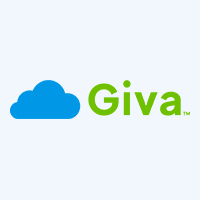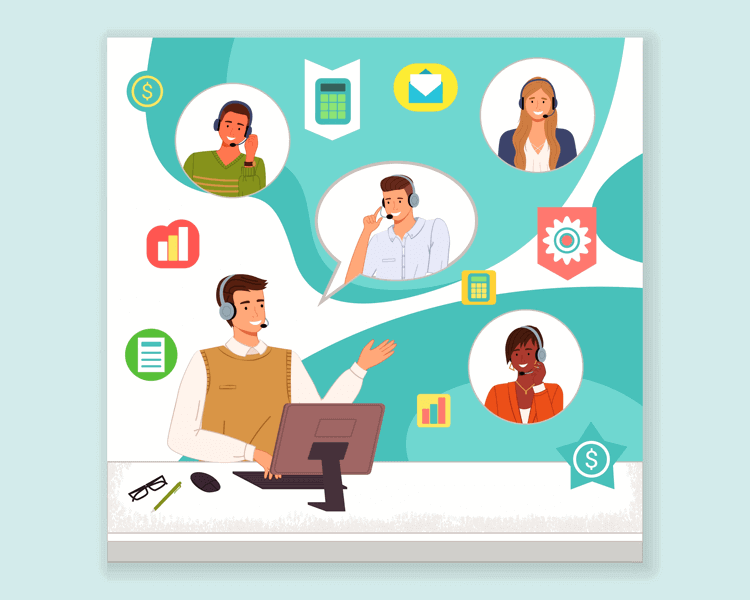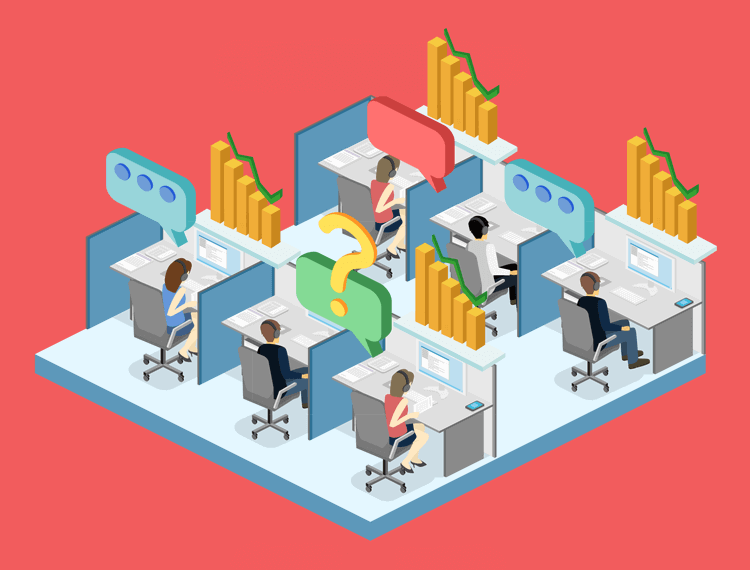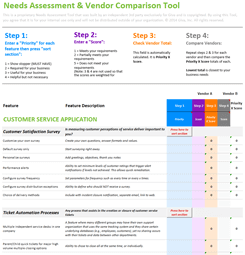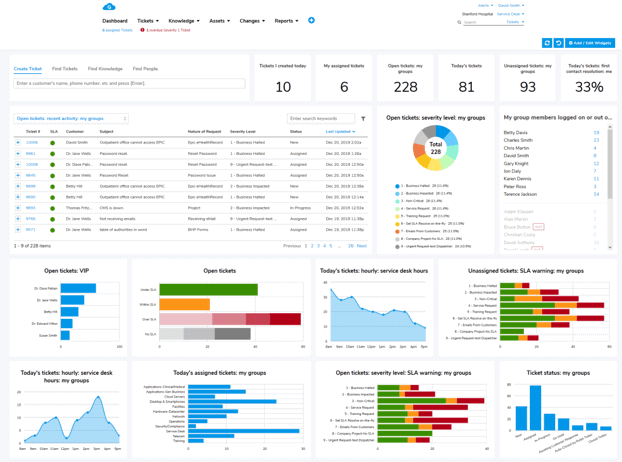SaaS Customer Support: Best Practices, Key Components and Choosing the Right Software
In this economy, competition is going to heat up, and for any SaaS business, maintaining market differentiation based on features or price is increasingly challenging.
As a result, customer support — the human face of your SaaS — can make or break customer onboarding, retention, Customer Lifetime Value (CLTV), and brand reputation:
- Forrester reports that "customer-obsessed" organizations grow 41% faster than those that aren't as customer-centric. Zendesk data, based on what their customers are doing, notes that 73% of consumers will switch to a competitor after multiple bad support experiences. On the flipside, Salesforce notes that 73% of its new bookings come from existing customers, based on their receiving positive customer service.
- A leading automation SaaS, UiPath, drives 75% of new revenue from upsells and cross-sells from its current customers. When customers feel valued and supported, they not only stay longer but also buy more. The data proves that returning customers spend 67% more on average than new ones.
- SaaS support means empowering customers to solve their issues quickly. This can include a combination of automated self-service. If problems can't be solved that way, then with a helpful team of customer support (sometimes known as customer success) agents.
This in-depth guide explores:
- What SaaS customer support encompasses
- Why it's mission-critical
- The five key components every team needs
- How to choose the right support tools
- And ten actionable best practices to elevate your CS/CX operations
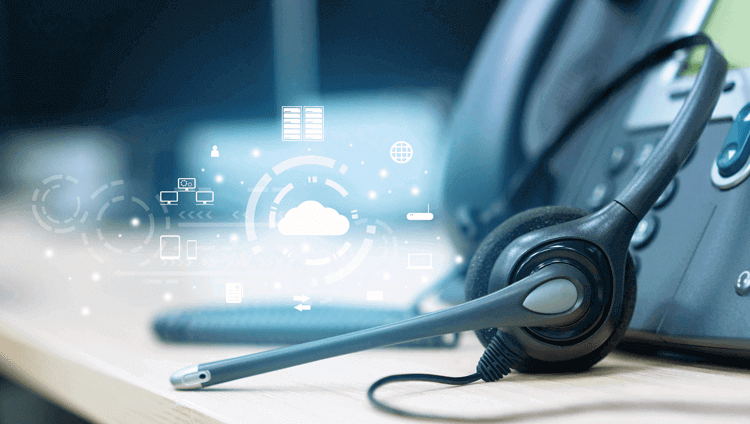
What Is SaaS Customer Support?
SaaS customer support refers to the systems, people, and processes dedicated to helping users onboard, troubleshoot, and maximize the value of a software-as-a-service product.
The #1 goal of every SaaS customer support team is to maximize user success with the product. Good support teams understand the customer's context (e.g., industry, use case, integration needs, etc.) and use that insight to resolve issues or onboard new features.
Unlike IT-based software support, which often handles one-off installations or perpetual licenses, SaaS customer support is more customer-centric than technical. Yes, they deal with technical issues. But to work in CX for a SaaS, the skills required are more comparable to customer service skills in other industries, like telecoms or finance.
CX spans the entire customer journey, from initial onboarding and feature adoption to renewal discussions and expansion opportunities.
Here are some key characteristics of SaaS support:
- Subscription-centric mindset: Support isn't just about fixing problems; it's about ensuring customers continuously feel valued and understand the value of the product, so they're happy to keep subscribing.
- Data-driven insights: Because usage and engagement metrics should be accessible to CX teams, support agents should be automatically alerted to engage with accounts at risk of churning (leaving).
- Scalable touchpoints: High-velocity onboarding and self-serve is important at scale. However, white-glove assistance is still vital for high-value clients, like enterprise-level customers.
- Product-led collaboration: Close alignment with product and engineering teams is important to provide customer-centric inputs into roadmap prioritization, bug fixes, and upgrades.
As we can see, SaaS support is an ongoing relationship investment rather than simply troubleshooting. This also means that leaders can shift from reactive firefighting to proactive value delivery.
Why Good SaaS Customer Support Is Mission-Critical
Even small improvements in customer retention can dramatically boost profitability. According to a recent study by Gitnux, via Harvard Business School, a mere 5% increase in customer retention can raise profitability by 75%.
Another example of this is that HubSpot's support team saved $2.3 million in annual headcount costs and boosted productivity 1.6X. At the same time, this high-quality CX activity generated qualified leads that have increased recurring revenue by $38 million since 2019.
A subscription billing platform, ChartMogul reports that up to 36% of a mid-market SaaS company's revenue comes from upsells and add-ons.
Companies that invest in support increase revenue more sustainably, improve CLTV, and reduce churn. SaaS Capital's 2025 benchmarks show that private SaaS firms spend about 8% of ARR on customer support and success.
Here are the 6 main reasons why customer support is mission-critical for SaaS businesses:
-
Retention Drives Revenue
In SaaS, the majority of lifetime revenue comes from renewals and existing customers spending more. Current customers staying loyal increases the overall value of the business, not just Monthly Recurring Revenue (MRR) or Annually Recurring Revenue (ARR) and profitability. A 5% increase in retention can boost profitability by up to 75%. An excellent support experience helps to fix immediate issues, and also deepens product adoption, reducing churn over time.
-
Customer Lifetime Value (CLTV) Maximization
Customers who feel supported are more likely to upgrade, purchase add-ons, and refer others to you online and in real-world conversations. Turn CX agents into brand advocates, and your customers into fans; this will unlock growth opportunities that can multiply CLTV.
-
Brand Differentiation
It's harder than ever to stand out based on features. Too many SaaS businesses of every size, in every sector and niche, are offering the same features.
Feature parity, also known as commoditization, is only going to intensify. So, you need a new, or better way to stand out, and a customer support team could help you emerge as a key differentiator.
Glowing support reviews serve as vital social proof. Whereas, poor experiences can prevent new sign-ups, or discourage a renewal before the end of a trial period.
-
Voice-of-Customer Intelligence
Support interactions are a goldmine of qualitative feedback. From feature requests to pain points, capturing and acting on this intel helps to support product managers' decisions and the prioritization of work done on the product roadmap.
-
Customer Service Agents' Soft Skills
Skilled customer service agents need to provide a mix of advice, problem solving, customer education, and identify, and act on upsell opportunities.
Soft skills are a vital part of this: empathy, clear communication, and proactivity. Proactive support whenever possible, such as reaching out to users who appear stuck or offering onboarding calls, is often more effective for retention, reducing churn, and increasing CLTV than waiting for tickets when a problem has already happened.
-
Cost Efficiency
While headcount is often the largest cost in support budgets, investing in the right processes and self-serve resources reduces Average Handling Time (AHT) and ticket volumes. This helps deliver more support at lower marginal cost.
Self-serve and AI tools are helping keep costs low. While acknowledging that human customers are increasingly preferring interacting with human agents, you must offer the best of both and remember that CX is a revenue, not a cost center.
Now, let's dive into the 5 key components of SaaS customer support.
Top 5 Components of SaaS Customer Support
Building a robust and helpful SaaS support team hinges on five mutually-reinforcing and interconnected components:
-
Internal Knowledge Base
An Internal Knowledge Base (IKB) is a centralized repository of documentation, troubleshooting guides, best-practice playbooks, and escalation protocols that your support teams use daily. It's an essential component of every CX team, and without it, they won't be able to provide the support your customers expect.
Why This is Important
- Consistency: Ensures all agents, including those working different shifts and in other countries, speak with the same voice and follow consistent resolution steps for every possible issue customers could encounter.
- Onboarding: Helps new team members become productive faster by providing structured training materials.
- Escalation Efficiency: Facilitates handoff to Subject Matter Experts (SMEs), managers, engineering, and even the founder/co-founder, with clear context, reducing back-and-forth delays.
- Continuous Improvement: Serves as the living archive where post-mortems and ticket analyses inform regular updates.
Best Practices
- Modular Content: Break articles into digestible chunks (e.g., "Troubleshooting Login Errors" instead of a monolithic "Getting Started").
- Version Control: Tag KB articles with product release versions to avoid outdated guidance. AI tools are very helpful when it comes to ensuring the KB is consistent with the product roadmap and updates.
- Search-First Mindset: Implement strong tagging, synonyms, and AI-enhanced search to help agents quickly locate relevant articles.
- Feedback Loops: Allow agents to rate KB articles; use low-rating flags to surface content needing revisions.
-
Self-Serve Resources
Self-serve resources enable customers to resolve common questions independently via public documentation, FAQs, community forums, interactive tutorials, and AI chatbots.
A comprehensive self-service platform, consisting of a knowledge base, FAQ, and AI tools, is essential. Customers expect to help themselves first. It's a known fact that 88% of customers expect an online self-service portal, and 67% prefer solving issues on their own.
Why This is Important
- Scalability: Reduces incoming ticket volume by empowering customers to find answers on their own.
- 24/7 Availability: Serves global customers outside of office hours.
- Onboarding Acceleration: Guided tutorials and walkthrough videos shorten Time-to-First-Value (TTFV). This is a metric which measures how quickly a person or team starts benefitting from using a certain program, software or service.
- Community-Driven Innovation: Forums often produce creative workarounds and integrations that official docs may not yet cover.
Best Practices
- Unified Help Center: Host all materials (articles, videos, API docs, etc.) in one easily navigable portal.
- Interactive Walkthroughs: Use in-app guidance tools (e.g., product tours, tooltips) to contextualize support content.
- AI Chatbots: Deploy bots to answer routine queries; escalate to human agents only when needed.
- Community Moderation: Appoint community managers or "evangelists" to nurture forum engagement and curate top answers.
-
Omnichannel Strategy
An omnichannel strategy allows customers to engage via their preferred channels without losing context as they switch between them. These are most commonly now email, live chat, phone, social media, in-app messaging.
Why This is Important
- Customer Preference: Some users still prefer phone. Others want instant chat or social mentions.
- Context Preservation: A unified conversation history means agents know previous touchpoints, reducing customer frustration.
- Brand Cohesion: Consistent tone and response times across channels reinforce professionalism and trust.
Best Practices
- Channel Mapping: Define which issues (e.g., billing vs. technical) are best handled via which channels and set service-level targets accordingly.
- Seamless Handoffs: Use ticketing software that auto-threads conversations, regardless of channel.
- Proactive Outreach: Trigger in-app messages or email nudges when usage data indicates potential friction (e.g., stalled workflows).
- Social Listening: Monitor social platforms and review sites; respond promptly to both praise and complaints.
Integral to having an omnichannel strategy is the software that makes it all possible. We talk more about what to look for in your customer service software in the next section. For now, here is a quick overview.
-
Omnichannel Software
Omnichannel support software records messages across multiple channels into a single agent workspace.
The best software in this space should always provide multi-channel support, and should also include workflow automation, routing, SLA monitoring, and reporting.
Why This is Important
- Efficiency: Agents moving less between varying tools and screens, minimizing cognitive load.
- Managerial Visibility: Supervisors gain a holistic view of workloads, queue lengths, and performance metrics.
- AI & Automation: Simple workflows (e.g., "Assign all billing tickets and messages to Team B"), which means that other agents can focus on more complex support tickets.
- Integrations: Seamless connections to CRM, product analytics, and billing systems that will help reduce the need for manual data lookups.
Best Practices
- Scalability: Choose a platform that accommodates projected ticket volume increases and new channels. This is one reason why, when assessing the total cost, it's better to go with a fixed monthly fee rather than pricing based on ticket volumes.
- Customization: Ability to configure workflows, macros, and dashboards without heavy developer involvement.
- AI-Assisted Suggestions: Look for features like suggested replies, sentiment analysis, and automated categorization.
- Vendor Viability: Invest in vendors with strong roadmaps, robust support SLAs, and transparent pricing.
-
Monitoring and Metrics
Common metrics include First Response Time (FRT), Average Resolution Time (ART), Customer Satisfaction Score (CSAT), Net Promoter Score (NPS), and ticket volume trends. Top SaaS firms report these metrics at the executive level.
Monitoring involves tracking quantitative and qualitative metrics to support continuous improvement across the CX team. These include ticket volumes, (FRT), (ART), Average Handling Time (AHT), (CSAT), (NPS), and more..
Why This is Important
- Performance Management: Identifies high performers for reward and underperformers for coaching.
- Resource Planning: Data-driven forecasts prevent understaffing or overstaffing during peak periods.
- Process Optimization: Pinpoints bottlenecks (e.g., slow escalations) and knowledge gaps.
- Executive Alignment: Demonstrates ROI by linking support KPIs to retention, expansion, and churn reduction.
Best Practices
- Balanced Scorecard: Combine operational metrics (FRT, AHT) with experience metrics (CSAT, NPS).
- Real-Time Dashboards: Programmed critical alerts (e.g., a sudden increase in messages, Live Chat, and ticket volumes) sent to CX leaders as they happen. This could be important if messages need to be put out via social media, or if the company has suddenly suffered an unexpected service outage or cyberattack.
- Regular Reviews: Weekly team meetings to discuss trends, plus monthly and quarterly executive get-togethers to set strategic priorities based on performance metrics, reports, and analytics are essential.
- Predictive Analytics: Leverage usage and support ticket data to forecast churn risk and proactively reduce churn and increase CLTV whenever possible.
Now, let's look at what you need to consider when choosing customer support software.
How to Choose the Right SaaS Customer Support Tools and Software
Selecting the optimal support stack is an important decision for CX leaders and SaaS founders. If you already have a support stack/software that you aren't happy with, then you need to re-evaluate.
Whether you are starting from scratch or looking for a new vendor, consider the following when shopping for CX software:
-
Assess Your Needs
- Ticket volume and forecasted growth
- Channel mix: Live Chat, email, AI, phone, social, and in-app
- Required SLAs and compliance (e.g., GDPR, HIPAA)
- Reporting and analytics depth needed
- Look at what integrations are required and check if this software can support those
-
Prioritize Key Features
Don't be overloaded with features. At the same time, ensure you have everything taken care of in one platform.
- Unified inbox over point solutions. Make sure everyone on the team can see what's going on and what conversations and notes have already happened
- Robust automation (e.g., AI routing, macros, SLA escalations)
- AI-powered assistance (e.g., suggested replies, ticket classification, and tagging the support level needed)
- Easy integration with your CRM, product analytics, support surveys, payments, and other relevant development, roadmap, and product knowledge tools, as required
-
Vendor Evaluation
With every potential vendor, make sure you are evaluating and scoring them the same way. Ideally, make sure you can get a demo, both for managers and front-line agents. You need to look at the following:
- Scalability and Performance: Can the platform handle your growing user base and ticket volume?
- Customizability: How much can you tailor workflows, fields, and UI without needing developers to customize anything?
- Ecosystem and Marketplace: Prebuilt integrations and community-shared plugins and APIs accelerate deployment. A plug-and-play functionality is usually easier to use than one that involves heavy customization.
- Security and Compliance: Look for SOC 2, ISO 27001, and regional compliance credentials. In the healthcare sector, other security certificates are imperative too, like HIPAA and HITECH compliance.
- Support and Onboarding: Does the vendor offer dedicated success management, training, and a responsive support team? When this software is providing your customers support, you need to guarantee your support team will have help when needed.
For assistance, get our free customer service Needs Assessment Tool.
-
Total Cost of Ownership (TCO)
Not all CX software is priced the same, and with many, there are numerous hidden costs, so consider the following and confirm what the true total cost is going to be before you sign a contract.
- Subscription-pricing versus usage-based pricing
- Implementation and customization costs
- Ongoing admin and maintenance overhead
- Potential ROI from deflected tickets and improved retention
- At the same time, ask for case studies and any ROI-based studies a vendor may have done to prove that their solution will pay for itself over time.
After having a demo, the next steps are to:
-
Pilot, Iterate, and Roll-out
These steps are necessary to make sure this software will work effectively across all of the relevant teams and more than adequately replace any software necessary.
- Run a proof-of-concept with a cross-functional team
- Gather feedback on agent experience, admin usability, and reporting depth
- Iterate on configurations before fully implementing a team-wide rollout, and be sure to train the staff
Learn more: Discover how Giva offers the best in Customer Support Software to help your organization be successful.
10 SaaS Customer Support How-To's and Best Practices
Here are 10 SaaS customer support best practice tips that every CX leader and manager should know:
-
Embed Proactive Support via AI
Start shifting from reactive to proactive support by leveraging AI within self-serve.
Use AI-driven monitoring tools to detect unusual activity, such as a sudden spike in login failures, and trigger real-time alerts.
Implement chatbots that are trained on your knowledge base. These bots can handle 30–40% of routine inquiries, freeing up your team to focus on more complex issues.
-
Adopt a Tiered CX Support Model
Structure your support team with a clear tiered model to improve efficiency and resolution times, in the same way that ITSM teams are structured.
Tier 0 should offer self-service options such as documentation, chatbots, and video tutorials. Tier 1 can be staffed with generalists who handle the bulk of the most common and recurring tickets.
For more complex issues, escalate to Tier 2 or Tier 3, where specialized Subject Matter Experts (SMEs) provide in-depth support.
-
Focus on Customer Education
Empower your users through educational content. Host recurring webinars, offer open office hours, and organize user-group meetups to build community and deepen knowledge.
Consider launching a "Customer University" with structured training and certification paths to help power users become product champions. The best SaaS brands are product and content-led, and all of this comes from a deep understanding of their customers and a desire (and the ability) to support them every step of the way.
-
Leverage Multilingual Support
To better serve global customers, recruit local native speakers for key markets. Only do this if you have enough customers in particular markets to justify the cost of an agent.
For less common languages, deploy AI-based real-time translation tools to ensure that all users receive at least basic support in their preferred language. This helps expand your reach and improves user satisfaction.
-
Champion a Customer-First Culture
Make customer experience a company-wide priority by embedding CX metrics into executive KPIs.
Recognize and celebrate top-performing support team members to reinforce the value of excellent service and foster a culture of appreciation and accountability.
-
Integrate Support with the Product Roadmap
Provide an environment where your support team has a voice in product development.
Conduct quarterly "Voice-of-Customer" reviews to share recurring support trends and insights that can shape feature priorities. You could also assign support liaisons to product squads to maintain tight, ongoing feedback loops between frontline teams and engineers.
-
Measure Sentiment, Not Just Speed
Move beyond traditional metrics like CSAT and AHT.
Use sentiment analysis tools to evaluate the tone and emotional content of support interactions. This helps identify patterns, such as customers sounding unhappy. That usually precedes churn, so you can take proactive action to retain customers.
-
Optimize Escalation Paths
Avoid resolution delays by defining clear, automated escalation rules. For example, if a ticket remains unresolved for 48 hours (and is already outside of SLAs), it should automatically escalate to a Tier 2 agent as an urgent priority.
Use case-type tagging to route tickets directly to the right expert, reducing hand-offs and time-to-resolution.
-
Continuously Refresh Your Knowledge Base
Keep your knowledge base accurate and relevant through regular maintenance. Use AI to analyze the content of support tickets automatically. It can then draft outlines that dedicated agents can update and publish to keep the KB relevant.
Schedule quarterly audits to remove outdated content and add articles reflecting recent product updates. Analyze internal search data to spot missing topics and proactively fill those gaps.
-
Invest in Agent Well-Being
Your agents are your frontline brand ambassadors, so invest in their health, mental wellbeing, and personal and professional growth. Prevent burnout by rotating high-stress workloads and offering 24/7 wellness support.
Provide continuous training in soft skills like empathy and conflict resolution, as well as in-depth product education, to keep your team sharp and motivated.
Key Takeaways: Invest in Top Strategies for the Best in SaaS Customer Support
With the right tools, teams, and training, CX leaders and SaaS founders/COOs will be well-positioned to exceed customer expectations. Investing in customer support is no longer a cost center — it's a strategic differentiator and a growth lever that turns satisfied users into loyal advocates.
Here are a few final takeaways worth thinking about when it comes to building and supporting your customer service team:
- Support as Revenue Engine: Great support that consistently helps customers drives retention, growth, and referrals, fueling top and bottom-line growth.
- Five Pillars: Internal KB, customer self-serve resources, omnichannel strategy, multi-channel CX software, and robust metrics and customer surveys form the foundation of a scalable, world-class support operation.
- Tech-Enabled Proactivity: AI-driven monitoring and chatbots aren't optional; they're essential for managing volume and delivering 24/7 customer support for SaaS businesses.
- Customer-Centric Culture: Align support objectives with company goals, celebrate service excellence, and empower agents with training and tools.
- Continuous Iteration: As your product evolves, your support must evolve faster, driven by customer feedback loops, usage data, and quality metrics.
Useful SaaS Customer Support Resources
- Compare The 24 Best Customer Service Software for 2025: Giva Buyer's Guide
- Giva's Customer Service Resource Center
- Customer Service Whitepapers
Let Giva Help Streamline Your Customer Support Operations
For over 25 years, Giva has been a provider of HIPAA-compliant, and now people and AI-powered Customer Service Software.
Giva brings worry-free software so you can focus on delivering customer happiness!
People are the center of excellent service and AI Copilots help productivity to soar by:
- Starting to serve customers after just 1 hour of training
- Resolving issues quickly and effortlessly with AI Copilots, automation and smart workflows
- Getting immediate and actionable customer insights with highly visual dashboards, reports, charts & graphs
Get a demo to see Giva's solutions in action, or start your own free, 30-day trial today!
